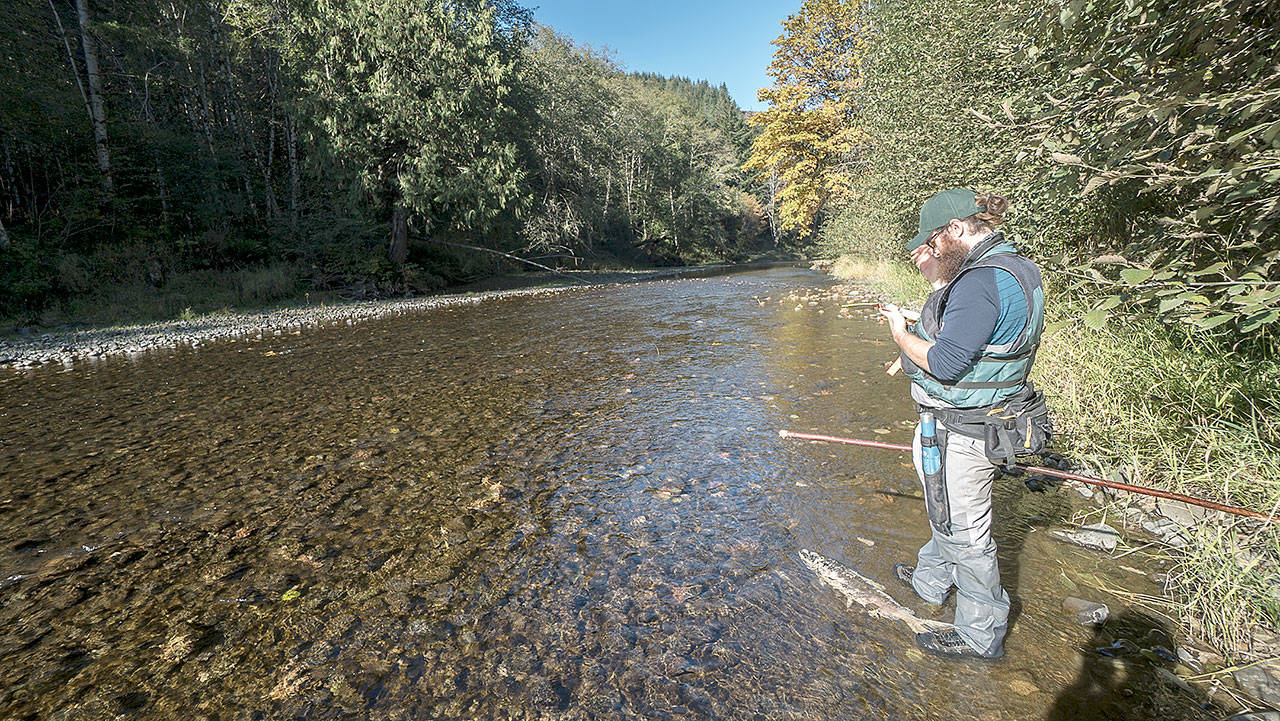By Doug Barker
The Daily World
The Chehalis River represents many things to many people. It’s a rich source of salmon, sometimes a blessing and sometimes a curse for farmers in at least seven counties, a deep cultural touchstone for Native Americans and a neighbor to some of the largest communities in Southwest Washington — a neighbor that at times is friendly and dependable and at times, such as when it floods, is a destructive menace.
A new film, “Chehalis: A Watershed Moment,” makes its television debut Thursday. The film, from Olympia filmmaker Shane Anderson and Jesse Andrew Clark, includes perspectives from a variety of stake holders with interests in the river and shows it in views you’re unlikely to have ever seen before. It airs at 8 on KBTC, the Tacoma PBS station.
Decisions
In the next couple of years, it’s likely that decisions will be made that will fundamentally affect the Chehalis long after anyone reading this is gone. State and federal regulators are considering a plan to build a dam in the headwaters near Pe Ell in the Willapa Hills. Whether there is a dam or not, there will be major projects that control flooding and improve habitat for aquatic species or buy up buildings that would be in the way of a flood. A large group of stakeholders representing communities, livelihoods and governments throughout the basin have been meeting for a decade already, and they are moving closer to decisions on what’s best for the river, the people who live in the basin and the environment.
The scenery
For as large as the Chehalis River is, it’s not very accessible. There are no long stretches of road from which to see it as it winds through tree farms and dairy farms off the main roads. Many of the river scenes were shot from a boat, and drone footage is also used. The scenes take viewers from the headwaters to Aberdeen, where the Chehalis becomes Grays Harbor.
Anderson, who grew up at Summit Lake on one edge of the basin and fished in the river, said he wants to show the complexity of the river’s role in the area and the positive aspects of involving many stakeholders in decisions regarding it.
“It’s a blue-collar watershed — a working river. It primarily goes through private land, where the communities and people who live on and around it depend on those natural resources,” Anderson said. “So it’s a little more challenging when making decisions. You have farmers, loggers, tribes and people in the communities.”
Since devastating floods in 2007, local, state and federal agencies and individuals with an interest in the river, have been working on flooding issues. The collective of interests, working with state government, has steered millions of taxpayer dollars to various projects in the Chehalis Basin, with millions more to come.
Anderson says he hopes the film will show that the cooperative effort is a model for similar situations on other river systems affected by the same cultural, economic and environmental dynamics. “The fact that there were all these people sitting down to try to solve these problems …” is a model he wants shared as widely as possible and he tried to be “as objective as possible,” he said, because “I have the intention of (convincing PBS to pick it up for a national audience) and they have the gold standard” for fairness.
“The story of the Chehalis is the story of a lot of rivers across the West and across the country,” Anderson said, “the same kind of conflicts and issues we’re going to be facing.”
The film doesn’t have a narrator and the river is the clear star, but it does have a human narrative in the form of interviews with people whose lives are affected by it: Elma area dairy farmer Jay Gordon, Fawn Sharp and Tyson Johnston of the Quinault Indian Nation, J. Vander Stoep, a Chehalis attorney who has been the most public face of the advocates for building a dam, and Vince Panesko, a tree farmer who owns the land where the dam would be built.
Anderson said he’s been around the river system his whole life and caught his first steelhead in the Wynooche River, one of the largest rivers to feed into the Chehalis. The film, which is about an hour long, “started as a passion project and ended as a passion project,” he said.



